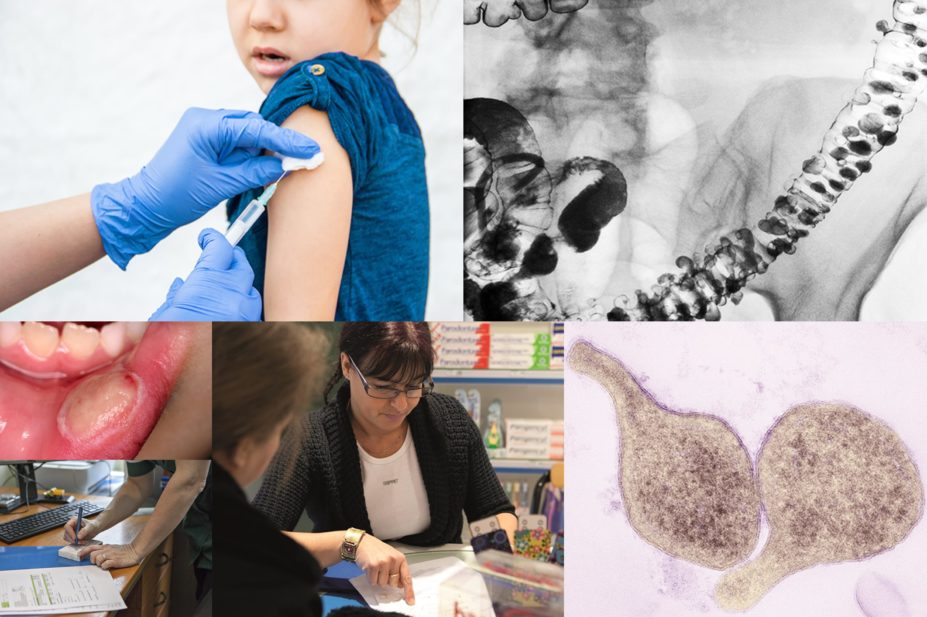
Shutterstock.com/BSIP SA / Alamy Stock Photo; Gastrolab/Lewis Houghton/Science Photo Library
The Pharmaceutical Journal has been a vital resource for pharmacists in 2019, with a staggering 3.5 million page views across our learning and CPD articles — up 38% from 2018. We have shared expert-authored content on a range of topics, including ‘How to’ guides to help pharmacists with revalidation; in-depth and peer-reviewed clinical CPD articles; and case-based learning that focuses on the issues pharmacists face in practice, such as preventing prescribing errors and managing medication incidents.
We have improved the feel of our website, and added new essential resources pages, making it easier than ever to find the latest clinical content and resources to ensure your knowledge is up to date.
There is some exciting content in the works for 2020, but, in case you missed them the first time around, here are our most-read articles from 2019.
10. Discussing the MMR vaccine with patients
There’s still controversy around the MMR
vaccine. This article helps pharmacists to prepare for conversations with patients about vaccine decision-making, and discusses the importance of emphasising facts over ‘myth-busting’, to improve vaccine uptake.
9. How to demonstrate empathy and compassion in a pharmacy setting
Showing kindness and compassion is central to the delivery of patient-centred care. This article helps pharmacists to make the best use of the short time they have in consultations with patients, and provides example audio dialogues to aid implementation in practice.
8. Clinical guidelines and evidence base for acute pain management
There are many misconceptions when it comes to over-the-counter treatments for acute pain. This article is vital for pharmacy teams who want to understand the evidence to support clinical-decision making for patients with pain symptoms.
7. How to investigate and manage a medication incident
With a staggering 237 million medication errors occurring in England each year, pharmacists want to know what to do when they happen. This article advised on the steps to take following a medicines safety incident.
6. Tobacco smoking and its potential drug interactions
Smoking and smoking cessation treatments can result in a significant pharmacological impact on some commonly taken medicines. This article helps pharmacists understand how the function of different common medicines are affected by smoking and smoking cessation.
5. Diverticular disease and diverticulitis: causes, symptoms and treatment
Diverticular disease and diverticulitis can be managed well in the community, with GPs, pharmacists and dietitians playing major roles in this. This article helps pharmacists gain an understanding of the symptoms, diagnosis and treatment of these conditions.
4. Antibiotic treatment of Mycoplasma genitalium infection
The UK prevalence of Mycoplasma genitalium infection is around 1.2% for men and 1.3% for women, with peak prevalence at ages 25–34 years and 16–19 years, respectively. This article provides an easy-to-read overview of the 2018 guideline for the management of this sexually transmitted infection.
3. The Revalidation ‘How to’ guides
Reflective accounts and a peer discussion became part of the requirements for revalidating with the General Pharmaceutical Council in 2019. Our resources were vital for those undertaking this new process, and they are among the most popular articles of the year.
- Revalidation: How to complete your reflective account
- Revalidation: How to complete a peer discussion record
- Revalidation: How to use planned and unplanned learning entries to record CPD
2. The top ten prescribing errors in practice and how to avoid them
All pharmacists want the best outcomes for their patients and safely delivering medicines is a vital part of this. This article helps pharmacy professionals identify and reduce these common, but preventable, prescribing errors.
1. Oral ulceration: causes and management
Patients often present in community pharmacy with mouth ulcers; pharmacists and their teams should know when to treat and when to refer. The photoguide and symptom overview in this article are important references for bestrecognising the varied presentation of the conditions.
Test yourself
Our peer-reviewed CPD articles have been designed to meet specific learning objectives relevant to clinical practice, and all feature an online assessment for you to test your knowledge. From September 2019, our assessments have been updated to include 15 ‘single best answer’ questions with five possible options, where only one is correct.
You can also test your knowledge in this year’s CPD and learning quiz.
All of our learning and CPD content is also available on the RPS MyCPD app.
If you have suggestions for topics that you would like us to cover, please email me at kristoffer.stewart@rpharms.com or tweet me @PharmKristoffer
You may also be interested in

Dale and Appelbe’s Pharmacy and Medicines Law: covering ‘essential ground in the most highly regulated areas of healthcare’

Tackling the NHS drug budget: why we set up a regional collaboration for medicines value
